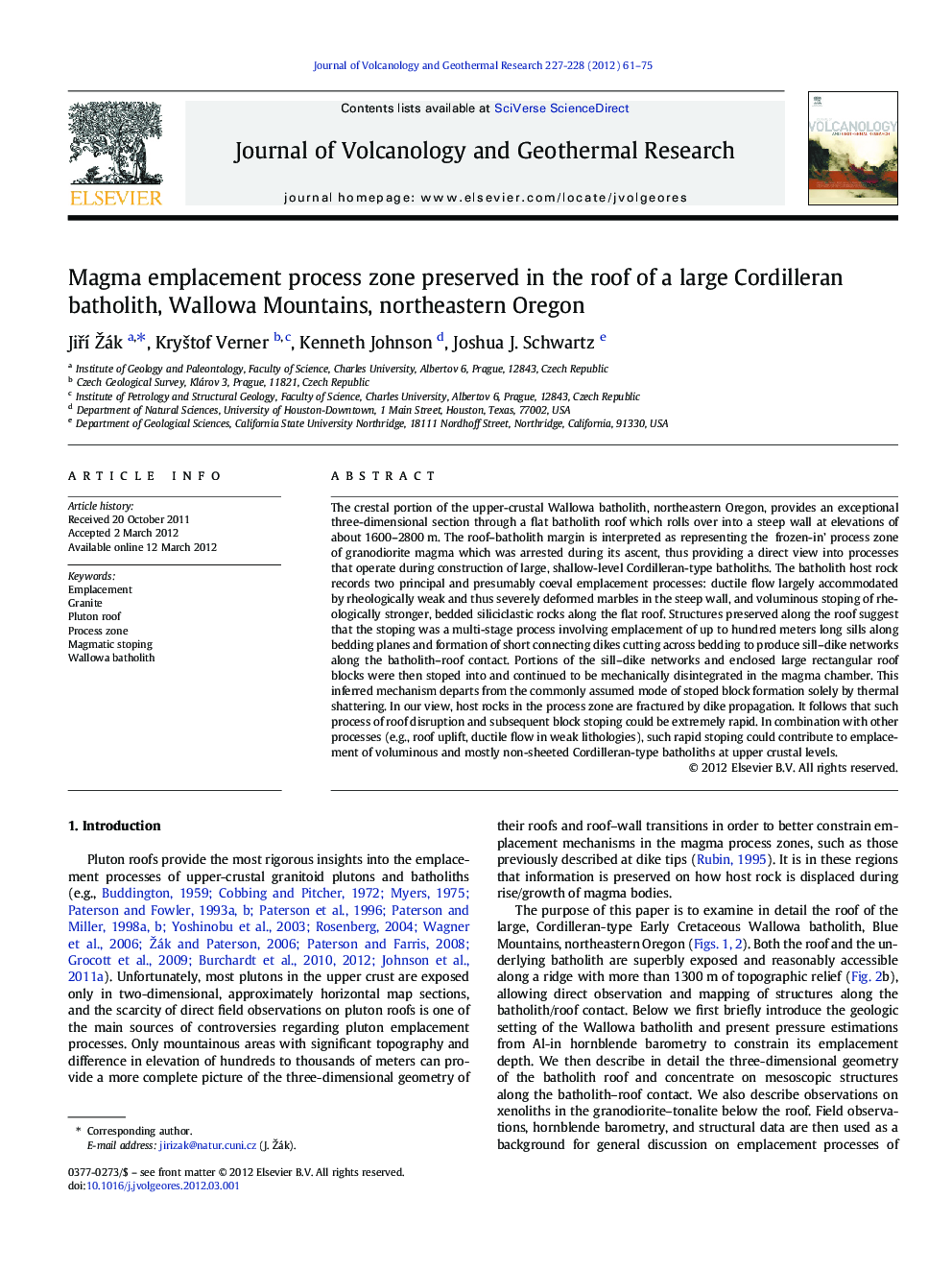| Article ID | Journal | Published Year | Pages | File Type |
|---|---|---|---|---|
| 4712712 | Journal of Volcanology and Geothermal Research | 2012 | 15 Pages |
The crestal portion of the upper-crustal Wallowa batholith, northeastern Oregon, provides an exceptional three-dimensional section through a flat batholith roof which rolls over into a steep wall at elevations of about 1600–2800 m. The roof–batholith margin is interpreted as representing the ‛frozen-in’ process zone of granodiorite magma which was arrested during its ascent, thus providing a direct view into processes that operate during construction of large, shallow-level Cordilleran-type batholiths. The batholith host rock records two principal and presumably coeval emplacement processes: ductile flow largely accommodated by rheologically weak and thus severely deformed marbles in the steep wall, and voluminous stoping of rheologically stronger, bedded siliciclastic rocks along the flat roof. Structures preserved along the roof suggest that the stoping was a multi-stage process involving emplacement of up to hundred meters long sills along bedding planes and formation of short connecting dikes cutting across bedding to produce sill–dike networks along the batholith–roof contact. Portions of the sill–dike networks and enclosed large rectangular roof blocks were then stoped into and continued to be mechanically disintegrated in the magma chamber. This inferred mechanism departs from the commonly assumed mode of stoped block formation solely by thermal shattering. In our view, host rocks in the process zone are fractured by dike propagation. It follows that such process of roof disruption and subsequent block stoping could be extremely rapid. In combination with other processes (e.g., roof uplift, ductile flow in weak lithologies), such rapid stoping could contribute to emplacement of voluminous and mostly non-sheeted Cordilleran-type batholiths at upper crustal levels.
Graphical abstractFigure optionsDownload full-size imageDownload as PowerPoint slideHighlights► Magma emplacement process zone is superbly exposed in the Wallowa batholith, Oregon. ► The batholith was emplaced by coeval ductile flow and voluminous stoping. ► Stoping was initiated by intrusion of sills and dikes disrupting the batholith roof. ► Magma ascent by stoping could be extremely rapid.
